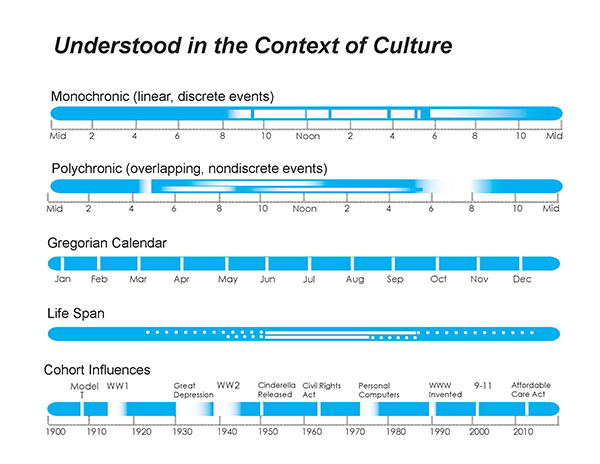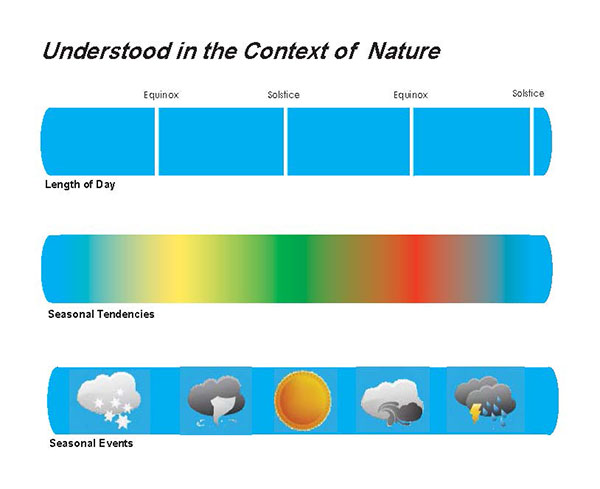By Bailey Kestner
Around six years ago, Jennifer Webb said that she had a discussion amongst her first-year interior design students about the impact that time has on interior space. Webb thought there was no impact, but her students corrected her.
“I realized they were completely right in that it did have impact,” said Webb, an associate professor of interior design in the Fay Jones School. “We never talk about it – the explicity of time.”
When one of her colleagues, Phoebe Lickwar, assistant professor of landscape architecture, said the phrase, “You’ve created this moment,” Webb started thinking deeper on the subject.
It was then that Webb decided that she needed to do some more investigation. She began researching in databases but didn’t have much luck.
“I was just searching the word ‘time’ and anything I could think of,” she said. “I really couldn’t find anything, but that peaked my interest even more.”
Webb even read works by Aristotle, Plato and Albert Einstein to educate herself on where time even started. She came across the book A Briefer History of Time, by Stephen Hawking.
The book is a briefer explanation of the themes discussed in Hawking’s earlier work, A Brief History of Time, which included the nature of space and time, the history and future of the universe, and the role of the divine in creation. A Briefer History of Time records the latest developments in the field, including string theory and the search for a unified theory of all the forces of physics.
In reading this book, Webb made connections of the definitions between science and philosophy, and how they applied to architecture and interior design. The reading generated more questions than answers.
Webb began investigating monochronic time, a discreet and linear way to view time, the North American perspective, opposed to polychronic time, an overlapping, mish-mashed way to view time. She began questioning how we schedule and use spaces around us.
She took into account seasonal changes. Considering that the school year starts after the harvest, she realized that everything is tied to nature. She also considered that winter often affects people’s feelings and questioned how we counteract that with space.
“It’s all really more complex than we think about,” Webb said.
Another aspect Webb realized was that everything was constantly changing. Architectural materials, our needs for a space and our understanding of a space. We even change spaces by the traces we leave on them.
“When we as people inhabit a space, we give it meaning,” Webb said. “The meaning and use can change over time, but time isn’t something we can control.”
This led her to the question of what designers can and cannot control. Webb said her research process was basically a bunch of rambling, but the outcome led her to a well-written, award-winning paper.
Webb wrote her paper while waiting for equipment to come in that would aid a separate project she was looking to complete. She had ordered cameras for people to wear that would take a snapshot every 10 seconds. The photos were to be used to record how the environment affected them as they went through their day.
Good and bad days affected how the person looked at space, as well as psychological conditions and physical changes. Webb realized that, in the end, this project challenged the same subjects that her research had.
Webb’s paper, titled “The Test of Time,” won “Best Paper Presentation” at the Southwest Regional Conference of the Interior Design Educators Council in October 2014.
Her paper asks these questions:
• “How does a designer begin to understand and manipulate the subtleties of space in relation to light, color, temperature, and sound over time?”
• “How do designers accommodate the human need for emotional connections to their environments as well as the meaning that will be ascribed at some future time?”
• “How does the designer anticipate ever evolving demands for functionality when future use cannot be envisioned?”
The IDEC conference was hosted by the Fay Jones School of Architecture and held Oct. 2 through Oct. 4 on the University of Arkansas campus, in the recently renovated Vol Walker Hall and its new addition, the Steven L. Anderson Design Center.
Different universities volunteer to host the event each year, and this was the third time in the last 15 years that the U of A has hosted this conference.
All faculty members in the Department of Interior Design helped to plan the event. The conference included 27 people representing the states of Colorado, Oklahoma, Texas, Louisiana, Arkansas and, for the first time, Iowa. Merideth Boswell, a production designer for films, was the keynote speaker, and around 14 presentations were delivered. The U of A was well represented throughout the conference.
Optional excursions included Thorncrown Chapel near Eureka Springs, Crystal Bridges Museum of American Art in Bentonville, with James Turrell’s Skyspace, as well as downtown Bentonville’s historic square and the Fayetteville Farmers’ Market.
“The people that come to this conference are like my family,” Webb said. “I get to see them twice a year at both the regional and national conferences.”
Though she described the recent regional conference as small and intimate, she said it is a little more stressful presenting her ideas to people she knows she’ll see again.
Webb said that she enjoys learning about the interconnectedness between disciplines and the depth collaboration brings to her research. She teaches design studio courses at all levels of the program, as well as Human Factors in Interior Design. She has mentored students to produce research that has been published in professional journals as well as at academic conferences.
As a professional interior designer, Webb also has worked in the field of corporate and healthcare design. She is an NCIDQ certificate holder and a LEED Accredited Professional. Since joining the interior design faculty in 1999, she has served on the Arkansas State Board of Registered Interior Designers and as the Southwest Chair of the Interior Design Educators Council. She also serves as a member of the Journal of Interior Design Board.


